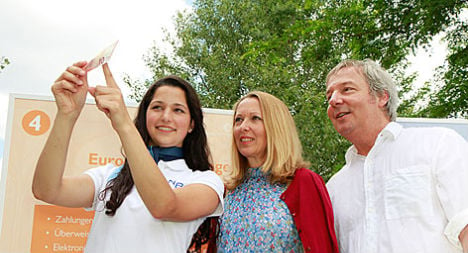Austria’s National Bank (OeNB) is hitting the road this summer to showcase the country’s new €50 note before it gets printed next year.
From July 22nd to September 20th 2016, the bank’s Euro-Bus will be travelling around the country and presenting the new note to Austrians.
Only the eagle-eyed will be able to tell the difference between the old and new €50, which includes a new hologram of the mythical Greek character Europa and a slight change in colour of the number on the note.
In the first half of 2016 the €50 note was the most counterfeited note in Austria but improvements to the design will now make it harder for counterfeiters, according to the OeNB.

Photo: OeNB
As well as showcasing the new note, the Euro-Bus will also act as an information point for anyone with questions about the areas the bank is responsible for, including financial stability and cash payments.
Anyone who still has some Schilling – Austria’s former currency before it adopted the Euro in 1999 – knocking about can also take them to be exchanged at the Euro-Bus.



 Please whitelist us to continue reading.
Please whitelist us to continue reading.
Member comments